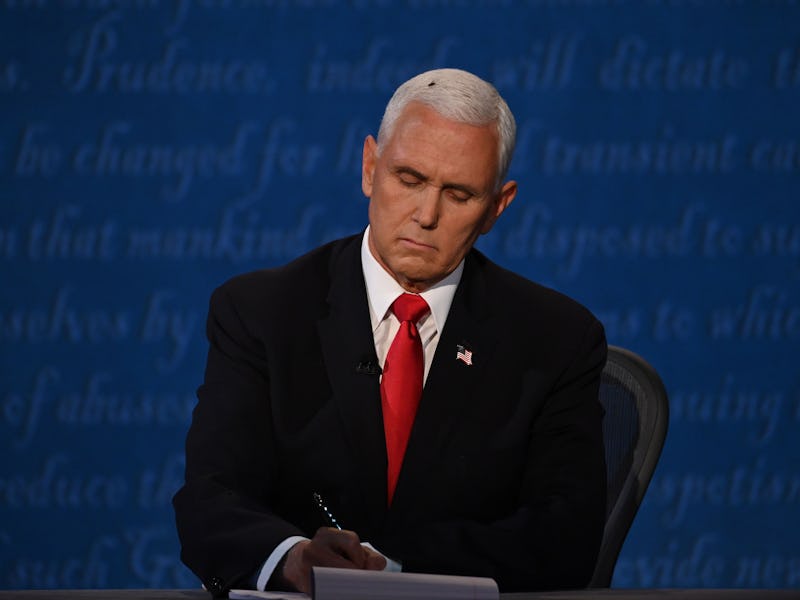When asked about climate change Mike pence gave this WILD answer
It's kind of incredible that Pence said what he said.

Climate change has now been mentioned in two straight debates, and this time the questions were allowed to have a little more substance. With both sides avoided talking about climate change in the drastic tones the topic demands, it was clear that Vice President Mike Pence was following in President Donald Trump’s footsteps, by dismissing the problem out-of-hand.
Most notably, Pence touched on an issue that many Americans have first-hand experience with — hurricanes. With regards to the ocean-borne storms, Pence said, “the National Oceanic Administration tells us that actually, and as difficult as they are, there are no more hurricanes today than there were 100 years ago."
Pence, who used the factoid to denounce “climate alarmists,” missed the points of those alarms. First, humanity's understanding of hurricanes was very different 100 years ago. While we know that the Great Miami Hurricane of 1926 was devastating, for example, poor meteorological information meant that citizens only got warnings hours before the hurricane struck.
While Pence is correct on the numbers, the question that he should be asking is if those hurricanes are getting stronger, moving more slowly across the land, and harming more people as the coasts are far more populated today than in 1920.
Atlantic storms lasting 2 days or longer have not increased over time.
However, the hurricane Power Dissipation Index (PDI) has rapidly increased.
And on this, the National Oceanic and Atmospheric Administration (NOAA, which Pence misidentified), has a clear answer. “The global proportion of tropical cyclones that reach very intense (Category 4 and 5) levels will likely increase due to anthropogenic warming over the 21st century, the agency’s Geophysical Fluid Dynamics Laboratory (GFDL) says.
The GFDL, writing in its general assessment of global warming and hurricanes, mentions that “the historical Atlantic hurricane frequency record does not provide compelling evidence for a substantial greenhouse warming-induced long-term increase.” This falls in line with Pence’s statement, but it speaks to an important distinction that needs to be made when discussing hurricanes: frequency, intensity, and duration.
Scientists aggregate these three factors into what’s called the Power Dissipation Index, or PDI. The PDI has been “sharply rising” since the 1970s, the GFDL notes. The lab’s projections, looking ahead into the 2020s, sees Atlantic hurricanes and tropical storms “substantially reduced in number...but have higher rainfall rates.”
And that’s just in the United States. “It is likely that greenhouse warming will cause hurricanes in the coming century to be more intense globally and have higher rainfall rates than present-day hurricanes,” says the GFDL.
Analyses vary when discussing the frequency of storms, and the GFDL concludes that an understanding of an “increase would not be detectable until the latter half of the century.” But no time is needed to see the immediate effects of climate change.
Some of the devastation caused by Hurricane Laura.
More rain and stronger wind are the results of climate change. The results can be seen as recently as August 2020, when warmer ocean temperatures pushed Hurricane Laura towards becoming a destructive Category 4, tied for being the strongest hurricane to ever make landfall in Louisiana.
The areas that are most affected by hurricanes also have more to lose than 100 years ago. In 1920, Miami’s population was estimated as just under 30,000. The U.S Census now estimates that Miami’s population is over 2 million. So the storms will be stronger and more people will be affected.
The Great Miami Hurricane of 1926 ended economic boom times in the still growing area, and NOAA estimates it would have been a “$90 billion disaster” if it occurred today. If hurricanes continue to be turbocharged by global warming, then the next Great one could be closer than we think.
This article was originally published on